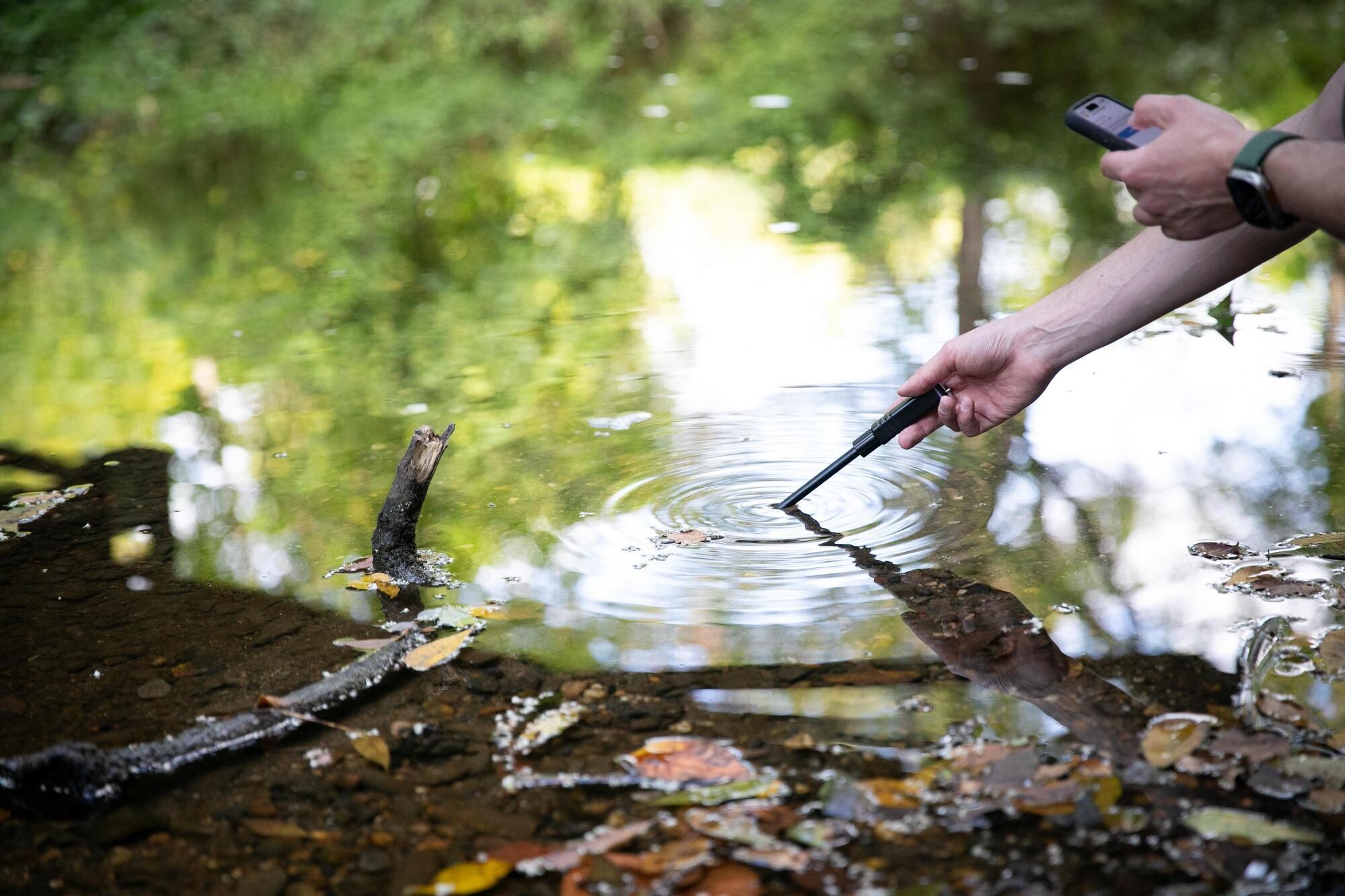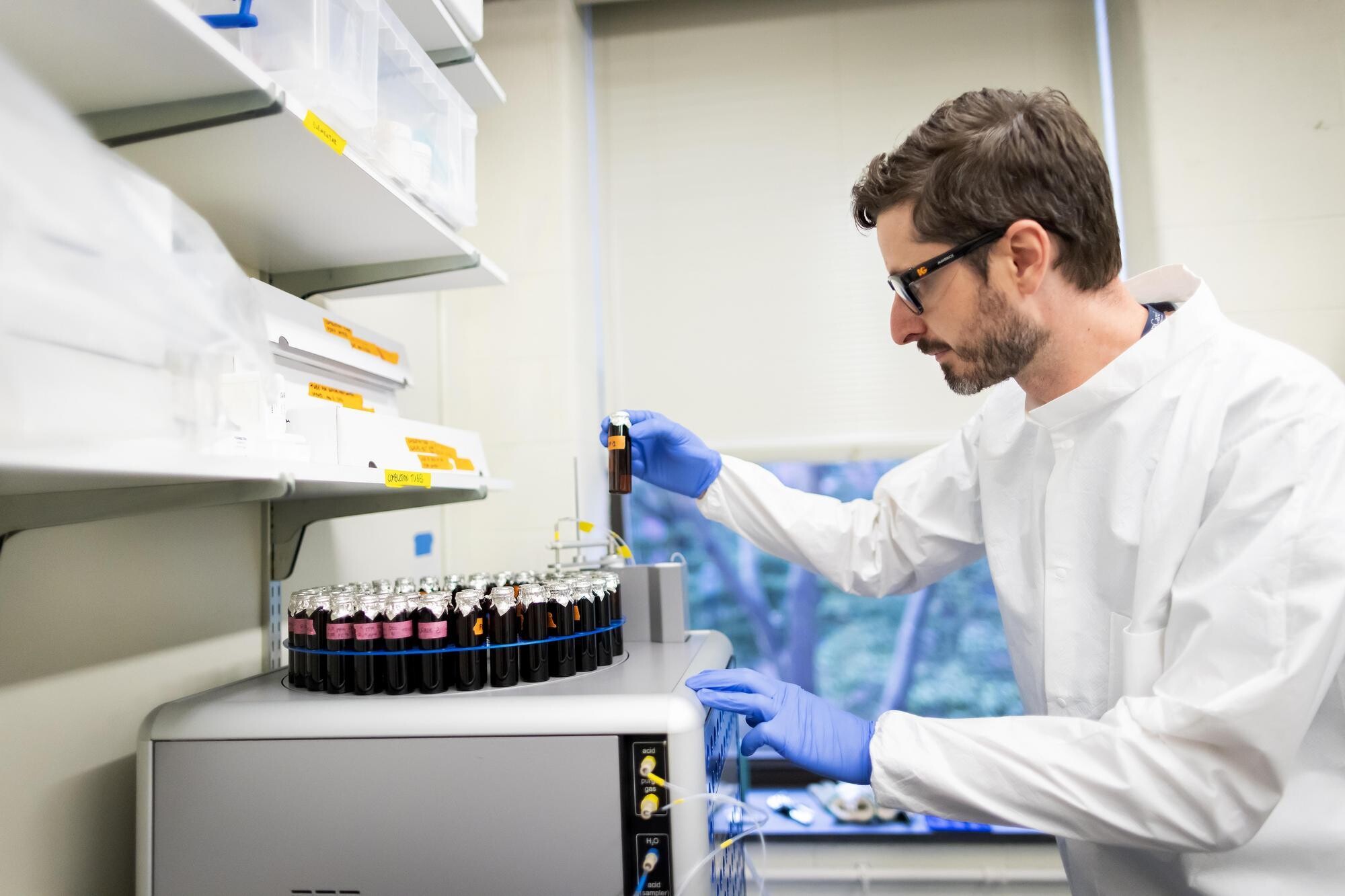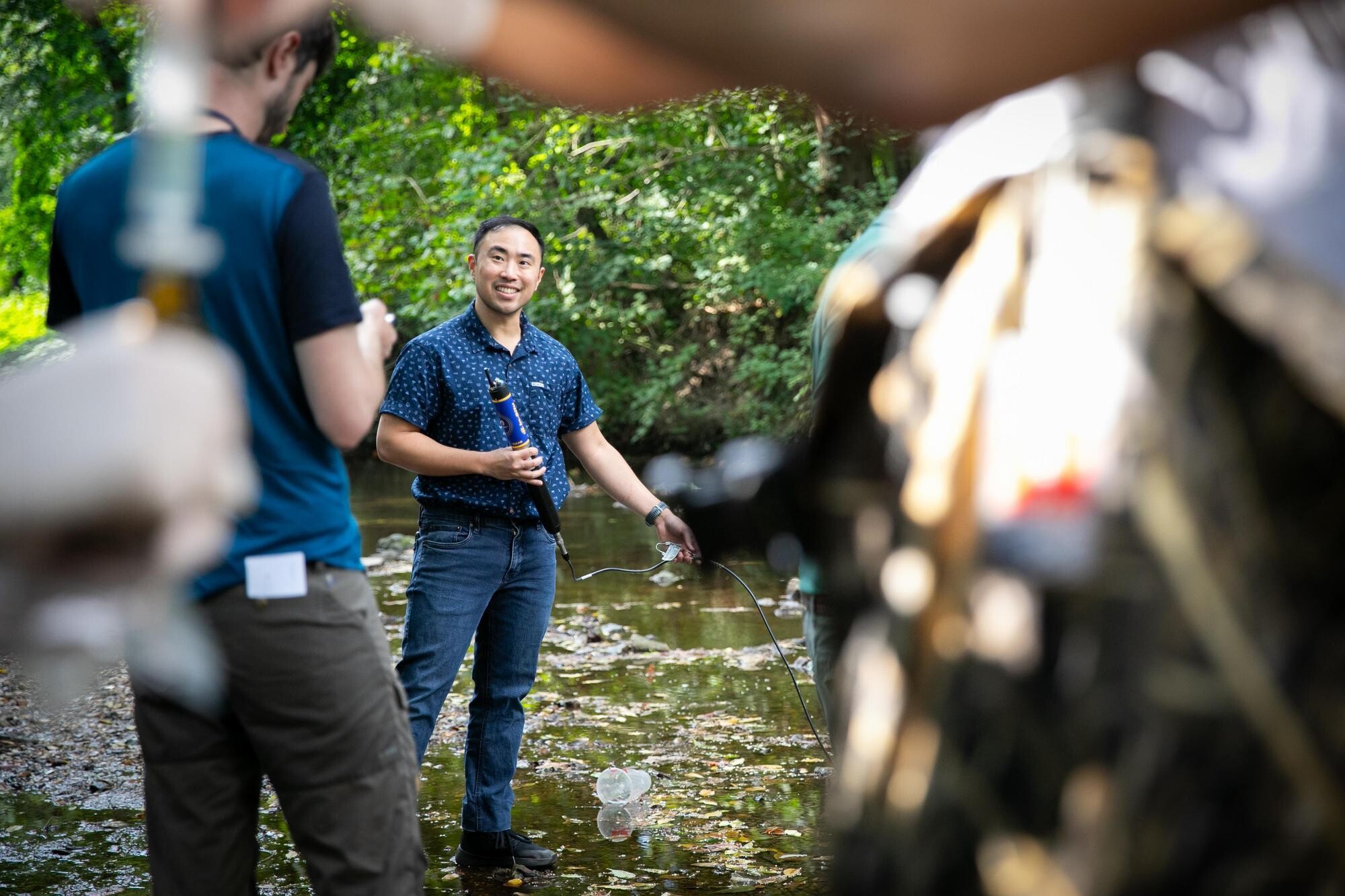
(From left) Doctoral student Hannah Yamagata, research assistant professor Kushol Gupta, and postdoctoral fellow Marshall Padilla holding 3D-printed models of nanoparticles.
(Image: Bella Ciervo)
4 min. read

The Pennsylvania Department of Environmental Protection has for decades designated Cobbs Creek in West Philadelphia an “impaired stream,” meaning it fails to meet at least one water quality standard, but lacks the data to identify the specific causes, says Jon Hawkings, assistant professor of earth and environmental science.
George Ambrose has spent the past four years leading volunteers in monthly water sampling with test kits at the creek. The test kits provide residents with basic information about their water, such as approximate pH and nitrate concentrations, but are not as detailed or precise as research-level water quality data.
“We want to inspire more local residents and students to careers in science, and for the community in general to have a greater sensitivity to environmental issues,” says Ambrose, coordinator of environmental science for the Cobbs Creek Community Environmental Education Center.
Since last year, Hawkings has led students in conducting more in-depth water sampling and analysis at the creek. The group of researchers and community members called the Cobbs Creek Stream Team are focused on empowering young leaders—from high school students to postdocs—in water quality monitoring. The effort builds off community efforts and The Water Center at Penn’s education initiatives at Cobbs Creek.
Hawkings says the aims of this project are to submit data to state and federal water quality reports and to share live water quality data with the community.

The overarching goal is to get city and state agencies interested in restoring the creek, says Jazmin Ricks, senior research program coordinator at The Water Center, who helps lead the Cobbs Creek Stream Team. In surveying residents of the Cobbs Creek neighborhood a few years ago, the center identified the smell of the creek and trash as top concerns. But the high-level data necessary to get wider awareness of the issues and investment in remediation has been lacking.
Thanks to a Klein Family Social Justice Grant from the School of Arts & Sciences, Hawkings’ lab installed a water quality sensor that can measure various parameters, such as dissolved oxygen, temperature, conductivity, and turbidity every 15 minutes and send data to the cloud in real time.
That means that for the first time, data is available about how short-lived events like storms impact the water quality of Cobbs Creek. Hawkings explains that even relatively small rain events have a critical impact on water quality because they wash in untreated sewage, trash, and industrial runoff.
He says that Alan Li, a second-year Wharton School student from Jacksonville, Florida who has been conducting water sampling over the summer, observed that dissolved oxygen in the creek gets very low during storm events. This is particularly bad for fish, but the overall ecosystem can be severely impacted.
Atiya Hasan, a second-year earth and environmental science major from Boulder, Colorado, has been working in Hawkings’ BiCycles Lab for more than a year. She says the most valuable part of the project is doing fieldwork that directly impacts the community.
On a recent visit to Cobbs Creek, as Li and Hasan filtered creek water and Ambrose took readings of dissolved oxygen and pH, a woman walking across the bridge overhead asked what they were doing. This is a common occurrence in the team’s weekly visits.
“Many members of the community are curious about the creek and believe that it's in a really unhealthy state,” Li says. But Hawkings says while his lab is still analyzing data, “the quality of the water actually isn’t as terrible as assumed”—aside from storm events—and is probably better than the public thinks.
“It’s kind of like being a private investigator. You use all these scientific tools to tell a story of the catchment,” says Hawkings. These tools can then be used to communicate the impacts of urbanization with the public.
Derek Ho, a postdoctoral researcher in the School of Engineering and Applied Science, joined the team to sample for microplastics from items illegally dumped in the creek. This connects to work in Hawkings’ lab measuring heavy metals in the creek like lead, cadmium, and copper, Ho says, because microplastics act as a sponge for these contaminants to latch onto. Ho’s overall research agenda is to make microplastics detection faster and more accessible by staining plastics and using fluorescence imaging and machine learning, instead of relying on conventional optical imaging methods.
Ricks also did water testing with high school students over the summer, including one who interned in Hawkings’ lab. Ricks says that because the Cobbs Creek Stream Team has been collecting data for months, there are more opportunities to get youth involved and teach them about data analysis and visualization. The Cobbs Creek Community Environmental Education Center is equipped to do this because of the science equipment, waders, and furniture purchased through a $100,000 Projects for Progress award from Penn in 2021.
“We want this to get youth interested in advocating for it,” says Ricks. “Cobbs Creek is a living, learning laboratory.”


(From left) Doctoral student Hannah Yamagata, research assistant professor Kushol Gupta, and postdoctoral fellow Marshall Padilla holding 3D-printed models of nanoparticles.
(Image: Bella Ciervo)

Jin Liu, Penn’s newest economics faculty member, specializes in international trade.
nocred

nocred

nocred